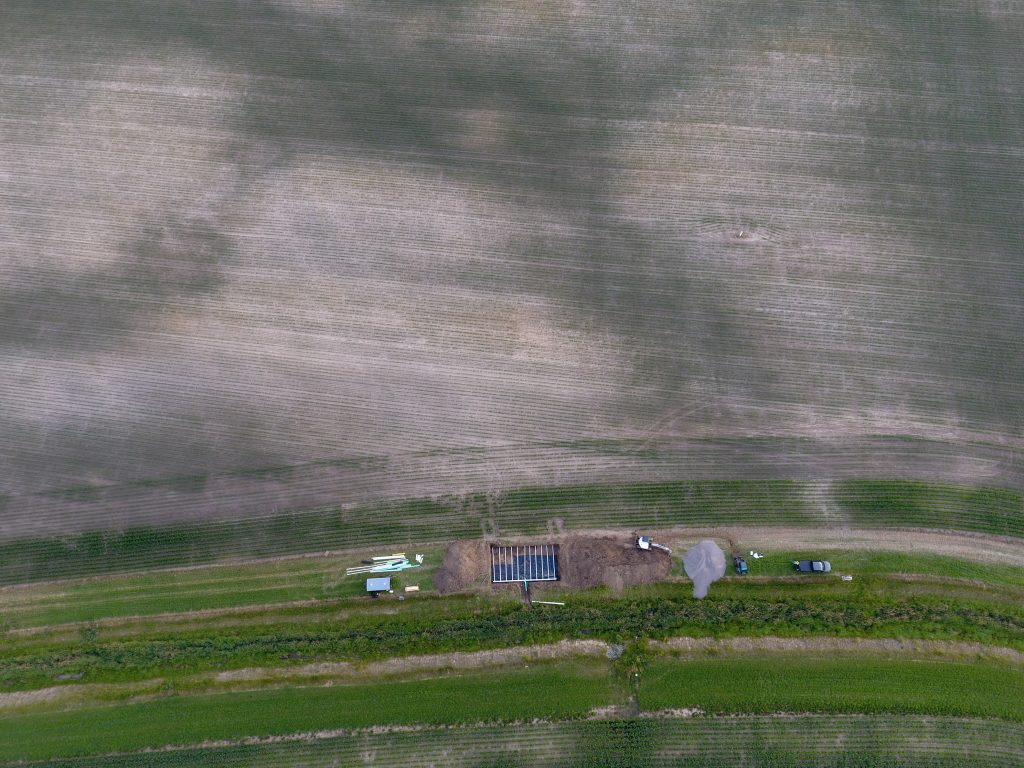What it is
Phosphorus removal structures are landscape-scale filters that contain a reactive substrate - such as steel slag, water treatment residuals or manufactured sorption materials - that can effectively treat runoff water and reduce dissolved phosphorus loading into surface waters. The structures can be designed for many different scenarios including surface runoff filters (blind inlets), subsurface drainage tile filters and ditch drainage filters.
How it helps
Phosphorus removal beds are ideally placed in situations and sites with a known excess dissolved phosphorus issue in the water of 0.2ppm. These sites also can include fields with extremely high soil test concentrations of 200 lbs/acre Mehlich-3 phosphorus. Fields with high concentrations of phosphorus have been shown to continually release dissolved phosphorus even after other measures (such as nutrient management and phosphorus drawdown) have been implemented.
According to Chad Penn, USDA-ARS, all phosphorus removal structures have the same four basic components:
- Contains a sufficient mass of an unconsolidated PSM (P sorption material). The material must have a strong capacity to absorb P. PSMs are usually industrial by-products or manufactured. However, there are some PSMs that occur naturally.
- The PSM is contained and placed in a hydrologically active area that receives and/or exhibits high dissolved P concentrations.
- High dissolved P water is able to flow through the contained PSM at a suitable flow rate.
- The PSM is able to be removed and replaced after it is no longer effective at removing P or able to remove P at the minimum desired rate.
Planning ahead
This conservation practice is relatively new. An effort is being made to train conservation staff on how to best utilize this practice. In addition, Chad Penn, USDA-ARS, has developed the Phosphorus Transport Reduction App (P-TRAP) software which allows users to design structures based on site-specific data. Phosphorus removal structures operate most efficiently under certain conditions and should be specifically designed for each location and PSM. Ideally, sites should be located where there are high dissolved phosphorus concentrations in water flow that can be directed into the structure. The size of the structure is highly variable based on parameters such as watershed, PSM used, target phosphorus removal and effective lifetime. P-TRAP can help estimate the cost of the proposed structure.
Maintenance
Management of the structure is dependent on which type of structure is installed. If there are high sediment concentrations entering the structure, additional practices should be utilized to reduce this. PSMs must be replaced or regenerated after they have reached their effective lifetime. USDA researchers are developing methods to strip phosphorus from the PSM.
Videos
Aaron Heilers, Project Manager of Ohio Demo Farms, walks you through taking a look at Legacy Phosphorus fields, fields that, in the past, had a high amount of phosphorus applied on them and the levels remain high today since crops can only uptake a certain amount. If this is your field, a phosphorus removal structure might play a role. Learn more watching this!
Featuring Dr. Chad Penn and a team of engineers and technicians. P-TRAP is free software developed by the USDA-ARS allowing non-engineers to design and build P filters, which can significantly decrease phosphorus runoff from farm fields, reducing harmful surface water eutrophication and algal blooms, as demonstrated in this video.
Photo Gallery
SHARE
Ready to learn more?









